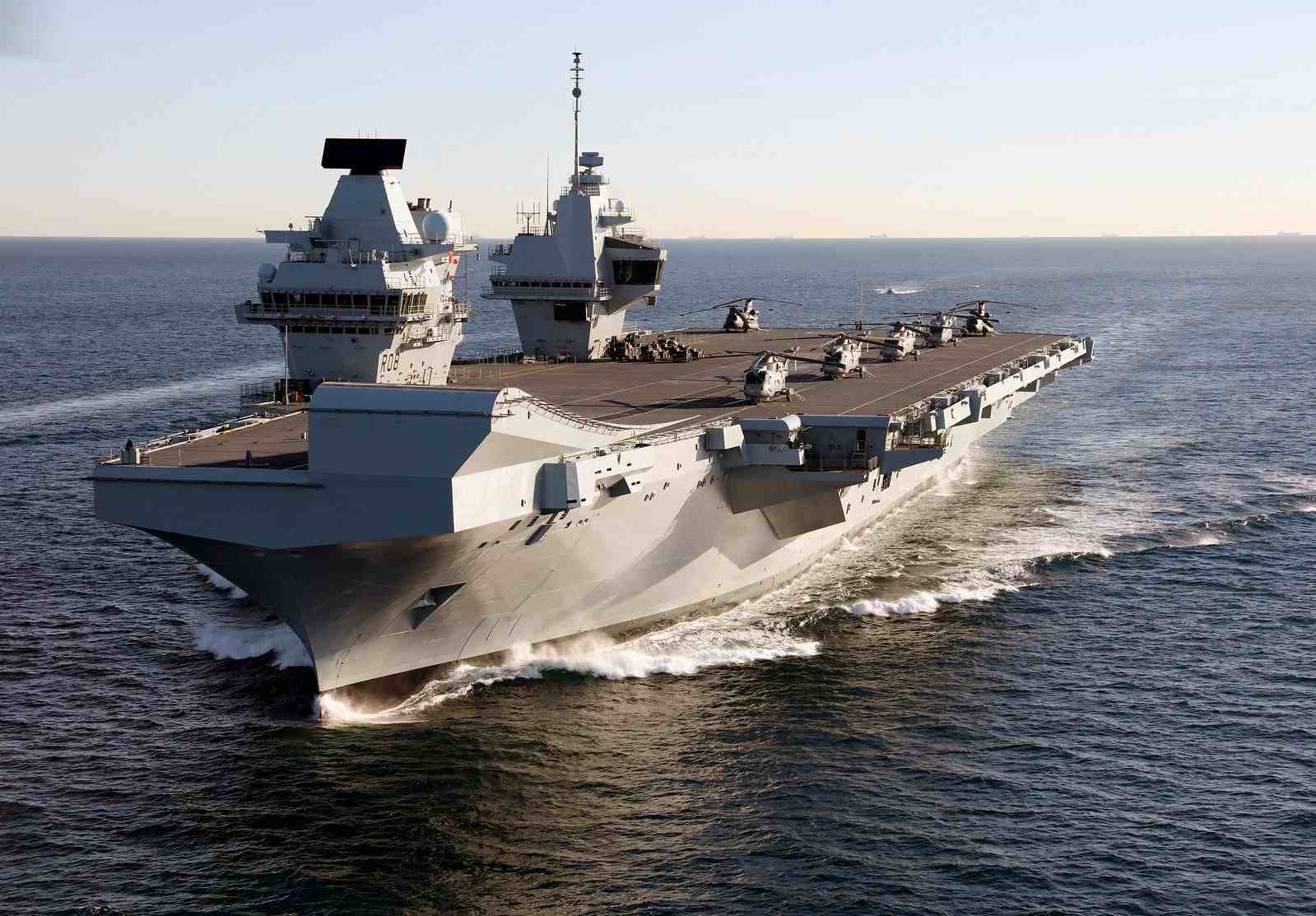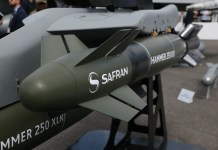The Royal Navy is exploring the use of advanced nuclear power technologies for its surface ships, signaling a potential shift in how its future fleet may be powered.
The Ministry of Defence (MOD) has issued a Request for Information (RFI), inviting industry leaders to provide insights into the feasibility of integrating Generation 4 nuclear reactors into naval vessels.
Although the RFI, which has a deadline of October 8, is not a formal tender, it underscores the Royal Navy’s growing interest in nuclear technologies, particularly their application to large surface ships.
Generation 4 nuclear reactors, known for their improved safety, efficiency, and sustainability, are at the forefront of this exploration.
The MOD is keen on understanding how these reactors, including smaller modular designs like Small Modular Reactors (SMRs), can be adapted for naval use.
The RFI outlines the Royal Navy’s need for detailed technical information, stating: “The Royal Navy (RN) is seeking information regarding integrating Generation-4 nuclear technologies for surface ship employment. Exploring scopes for alternative energy paradigms, the Royal Navy is gathering information on energy solutions for powering large surface ships.”
Generation 4 reactors are a significant advancement over previous nuclear technologies, offering enhanced safety features, better fuel efficiency, and reduced environmental impact.
These reactors are designed to minimize nuclear waste and include passive safety systems to prevent accidents. Their modular design makes them more flexible and suitable for a wide range of applications, including maritime use.
While the MOD has clarified that no further discussions with the industry are planned at this stage, any future procurement related to this initiative would follow public procurement regulations. This includes advertising through the Defence Sourcing Portal and Contracts Finder.
The information-gathering exercise focuses on several key areas, including technical feasibility, power output, and safety protocols. A critical aspect of the Royal Navy’s inquiry involves understanding the implications of nuclear power on ship design and construction.
The RFI seeks responses that address the modifications required for large surface ships to accommodate these nuclear systems and the research and development necessary to make this transition viable.
Is The Royal Navy’s Ambitious Plan Feasible?
For decades, many navies around the world have utilized nuclear power for their warships, with submarines being the most notable vessels to adopt this technology. The US Navy, for instance, operates several nuclear-powered aircraft carriers, including the Nimitz and Gerald R. Ford-class vessels.
France’s Charles de Gaulle aircraft carrier, introduced in 2001, also relies on nuclear propulsion for its operations. These ships, thanks to their nuclear propulsion, can operate for extended durations without refueling.
On the other hand, the UK’s nuclear propulsion has so far been confined to its submarine fleet. The Royal Navy’s Vanguard-class submarines, responsible for the UK’s nuclear deterrent, and the Astute-class attack submarines are all powered by nuclear energy.
The Royal Navy’s two most expensive surface ships, the HMS Queen Elizabeth and HMS Prince of Wales, commissioned in 2017, run on conventional gas and diesel engines.
Both British aircraft carriers have experienced significant technical issues. Early this year, EurAsian Times reported that HMS Queen Elizabeth had to withdraw from a major NATO exercise due to a malfunction in its propeller shaft. HMS Prince of Wales faced a similar setback in 2022, forcing it out of a planned exercise with the US Navy off the Isle of Wight.
Nonetheless, the Ministry of Defence’s recent Request for Information (RFI) regarding the potential for nuclear-powered surface ships has been viewed by some experts as a strategic step forward, though there are concerns about the high costs involved.
An Independent defense analyst has expressed doubts about the cost-effectiveness of nuclear propulsion for surface ships, given the challenges already faced by the Royal Navy.
Gabriele Molinelli, a close observer of British defense developments, acknowledged the initiative as “impressive” but expressed skepticism about its feasibility. “Don’t think it’ll take flight, but still impressive,” he noted.
Speaking to the UK-based Telegraph, Tom Sharpe, a former Royal Navy commander, noted that developing a fleet of nuclear-powered cruisers is not imminent. He added that while the focus on exploring nuclear propulsion is encouraging, it is not yet practical for immediate implementation.
Sharpe explained that nuclear propulsion becomes economically viable primarily for vessels over 80,000 tons, whereas the Royal Navy’s carriers at 65,000 tons do not fit this profile. He added, “Charles de Gaulle, which sits at 42,000 tons, is an expensive anomaly to be nuclear-powered.”

However, Sharpe suggested that advancements in Generation 4 reactor technology, which promises smaller, safer, and more efficient designs, could potentially alter the thresholds for when nuclear power becomes practical.
On the other hand, Pete Sandman, a naval expert, warned that the high costs and complex maintenance associated with nuclear propulsion could be prohibitive for the UK. He pointed out that nuclear technology involves stringent regulations and extensive training, which may outweigh the benefits for surface ships compared to submarines.
Overall, while the Royal Navy’s exploration of nuclear power for surface ships represents an ambitious and forward-thinking approach, the practicalities and costs involved will be critical factors in determining whether this technology will be integrated into the Royal Navy’s future fleet.
- Contact the author at ashishmichel(at)gmail.com
- Follow EurAsian Times on Google News




